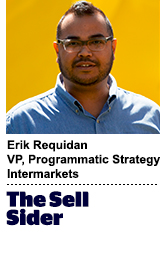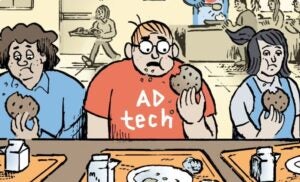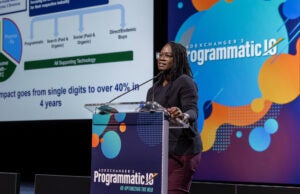
“The Sell Sider” is a column written by the sell side of the digital media community.
Today’s column is written by Erik Requidan, vice president of programmatic strategy at Intermarkets.
In a recent podcast, Chris Kane explained three ways that buyers navigate the complex programmatic supply landscape. The hardest: direct-to-publisher integrations.
Some of the biggest names in media have tweaked their ad sales structures, compensation and inventory offerings for programmatic direct, programmatic guaranteed and private deals. These tweaks have been enabled by automation, data and software.
Many of these deals are being counted as direct, but direct deals have changed significantly in the age of programmatic.
The way they were
Throughout the history of digital direct sales, premium deals were defined mainly by two major criteria: the deal’s price point, and whether it had been handled by human beings.
Direct sales used to be solely human-to-human – a mostly manual process that involved scheduling deals, running custom reports, handling insertion orders and negotiating price points. Marketers needed calculators to determine whether or not they were meeting KPIs, and created elaborate presentations to prove to stakeholders that goals were being met.
Planning, buying, launching and managing direct deals can all be automated today. Buyers and sellers still meet and discuss all of the requirements of an RFP, but no longer need the IOs in a traditional sense. Great software has been created to schedule direct placements, use negotiated price points and even allow in-depth reporting. Campaign goals, key performance indicators and all of the metrics that help both sides understand struggles and success can happen even faster than ever.
The way they were priced
Direct deals used to be focused on “premium inventory” – as an example, CPMs higher than $10. But premiums exist at many price points and many levels now – there is a premium at $48 CPM and, believe it or not, there is a premium at $1.75 CPM.
We often forget that in each campaign, the needs and goals of an advertiser vary greatly. The metrics of success may change on the fly, and the price of inventory and bids must adapt in real time. Auction-based buying has improved dramatically in this regard and will continue to do so.
Just doing deals
Definitions and meanings change over time – today, direct and programmatic direct are merging to become one and the same. Automating guaranteed and direct made direct buys more efficient, rather than producing radically better direct buys.
History will show that programmatic has delivered more value than traditional direct buys, while helping us find ways to improve upon those buys. It’s led publishers to experiment with the way they allowed direct and programmatic demand to compete with each other over impressions in real time. The result has been significant growth in yield and, when done right, an overall increase in CPMs, pricing and deals.
And buy-side partners are finding more of what they want in the form of inventory and users. In many cases, demand coming from programmatic is higher than direct buys.
Progressive publishers are striking new forms of direct private deals, such as private marketplaces and deal IDs with buyers, at premium price points. These are stepping stones into a future where legacy direct sales and programmatic converge.
If publishers want to control and ensure fair market pricing versus list pricing – and facilitate the buying and selling of audiences or identities – then we will have become the exchange. And the days of auctions being either open or private, and direct or indirect, will fade into just doing deals.
Follow Erik Requidan (@Requidan), Intermarkets (@intermarkets) and AdExchanger (@adexchanger) on Twitter.











